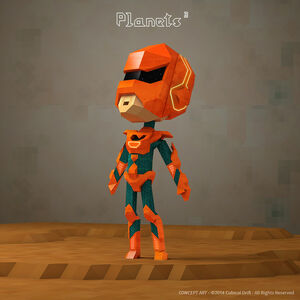When hitting an enemy with a weapon, the difference of hardness between the weapon and the armor is used to compute the damage applied. If the weapon’s hardness is greater or equal to the armor’s hardness, the incoming damage will be equal to the weapon’s full damage. However, if the weapon’s hardness is lower than the armor hardness the incoming damage will be reduced and the weapon will lose more durability. Once the hardness has been taken into account, the armor value will be subtracted from the incoming damage.
Weapons[ | ]
Statistics of weapon are:
- Hardness: defines the maximum hardness of armor against which the weapon will deliver full damage.
- Durability: defines the lifespan of the weapon. Once broken it's not destroyed, you will be able to repair it by bringing the appropriate resources to a NPC.
- Required strength: This is the strength needed to fully load the weapon in 1 sec.
- Range: represents the maximum distance between the character and enemies at which you can still hit them.
- Radius: enables the player to hit multiple targets at a time when they are side by side.
- Depth: enables the player to hit multiple targets at a time when they are behind one another.
- Damage: Defines the amount of damage this weapon will do if used to strike an enemy. This is what differentiates a weapon from a tool.
Armors[ | ]

3D model showing a male armour variant
Statistics of armors are:
- Hardness: the hardness of an armor is the hardness of the material used to craft it.
- Armor value: defines by how much the incoming damage are reduced.
- Durability: defines the lifespan of the armor. Once broken it is not destroyed, you will be able to repair it by bringing the appropriate resources to a NPC.
- Discretion: defines how noisy an armor is and therefore how easily the enemies will be able to detect you, even if you’re not in their line of sight.
